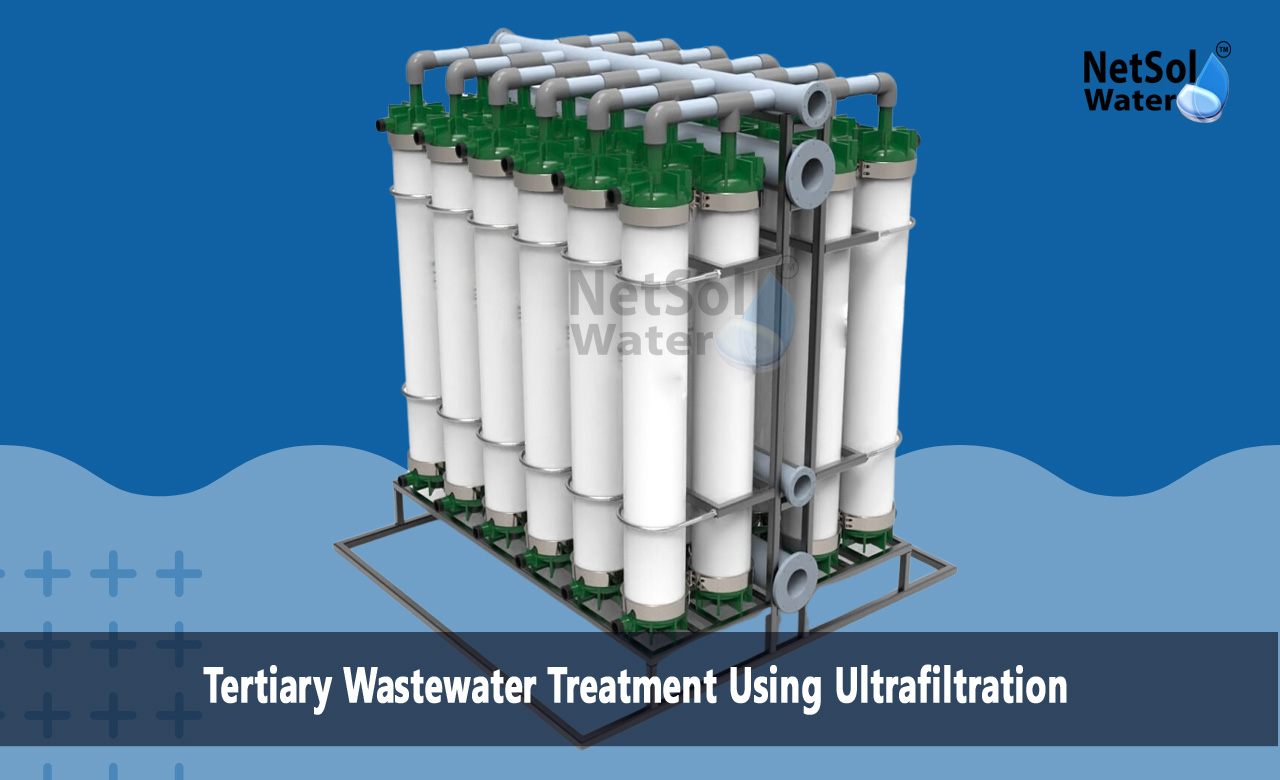Tertiary Wastewater Treatment Using Ultrafiltration
Clean water flows when plants treat wastewater in stages. Tertiary treatment adds an extra barrier to remove tiny particles and microbes. Ultrafiltration uses fine membranes to hold back solids and let clear water pass through. A wastewater treatment plant manufacturer can help industries meet strict rules. Netsol Water is a leading wastewater treatment plant manufacturer that offers reliable ultrafiltration modules. Their designs find use in factories and hotels and utilities. Demand for water reuse is growing and ultrafiltration has a key role. This method handles particles and pathogens that earlier steps may not catch. It works with existing filters to raise quality to levels close to drinking standards. Many operators have seen ultrafiltration cut their discharge loads. As rules tighten the choice of system matters more. Installing the right equipment makes a real difference.
Principles of Ultrafiltration
Understanding the principles of ultrafiltration helps operators choose the right system. We explore how membranes act as barriers and what drives the separation process. Each device has a frame and a set of hollow fibers or sheets that form the core.Let us have a look at some key aspects that define this method.
Membrane Structure: Ultrafiltration membranes come in various materials and shapes. Fibers and sheets resist pressure and filter out fine particles. The pores have a size that ranges from 0.01 to 0.1 micrometers to block bacteria and colloids.
Separation Mechanism: Ultrafiltration works by applying pressure on the feed side. Water passes through the pores while solids remain behind. The process relies on a physical block rather than on chemical action to keep water clean.
Benefits of Ultrafiltration in Tertiary Treatment
Building on the principles of separation, ultrafiltration adds a new layer of purification beyond secondary steps. It ensures high clarity and lower pathogen counts. Many plants adopt ultrafiltration to meet stricter limits and guard public health.Let us have a look at some major advantages.
High Removal Efficiency: Ultrafiltration can remove very fine particles and bacteria with high success. It produces water that other filters cannot match. This level of removal makes it easier to meet tight discharge or reuse rules.
Consistent Water Quality: Ultrafiltration runs at steady pressure and yields uniform output day after day. It does not depend on changing chemical levels or operator guesswork. That consistency brings more confidence in the treated water quality.
Design Considerations for Ultrafiltration Systems
Such benefits shape the design needs for a practical system. Designing an ultrafiltration system requires careful attention to both hardware and site needs. Engineers must pick membrane types that fit the feed water and the volume of flow. They also need to plan the layout to make operation and cleaning simple.Let us have a look at some core design factors.
Membrane Selection: When choosing membranes designers check chemical resistance mechanical strength and pore size. Each factor can change how well the system handles load and how long it lasts. As a leading wastewater treatment plant manufacturer Netsol Water tests each membrane to match local conditions and feed types.
Module Configuration: Modules can come as flat sheets or as spiral wound units or as hollow fiber bundles. The choice affects how much area fits in a given footprint. Engineers plan the array to balance performance with ease of maintenance.
Operational Factors Affecting Performance
Once the system is in place operators must focus on key factors to keep performance high. Running an ultrafiltration plant means watching a few key parameters. Operators must track pressure flow and membrane fouling to keep output stable. Good operation makes the system last longer and saves energy. Let us have a look at some operational steps.
Cleaning and Maintenance: Cleaning can use backwash or chemical wash to clear blocked pores. Scheduling this work prevents downtime and avoids damage. Netsol Water provides simple tools and guidance to keep each unit at peak health.
Pressure Control: Maintaining the right pressure drives water through membranes without forcing solids deeper. Too much pressure can shorten module life and raise energy use. A good control system keeps pressure in the target range.
Conclusion
Ultrafiltration offers a clear path to better water reuse and safer discharge. Netsol Water proves its role as a wastewater treatment plant manufacturer that guides clients from start to finish. Contact Netsol Water today to learn how this wastewater treatment plant manufacturer can support your project. Reach out for more details or to request a consultation.
Contact Netsol Water at:
Phone: +91-9650608473, Email: enquiry@netsolwater.com



